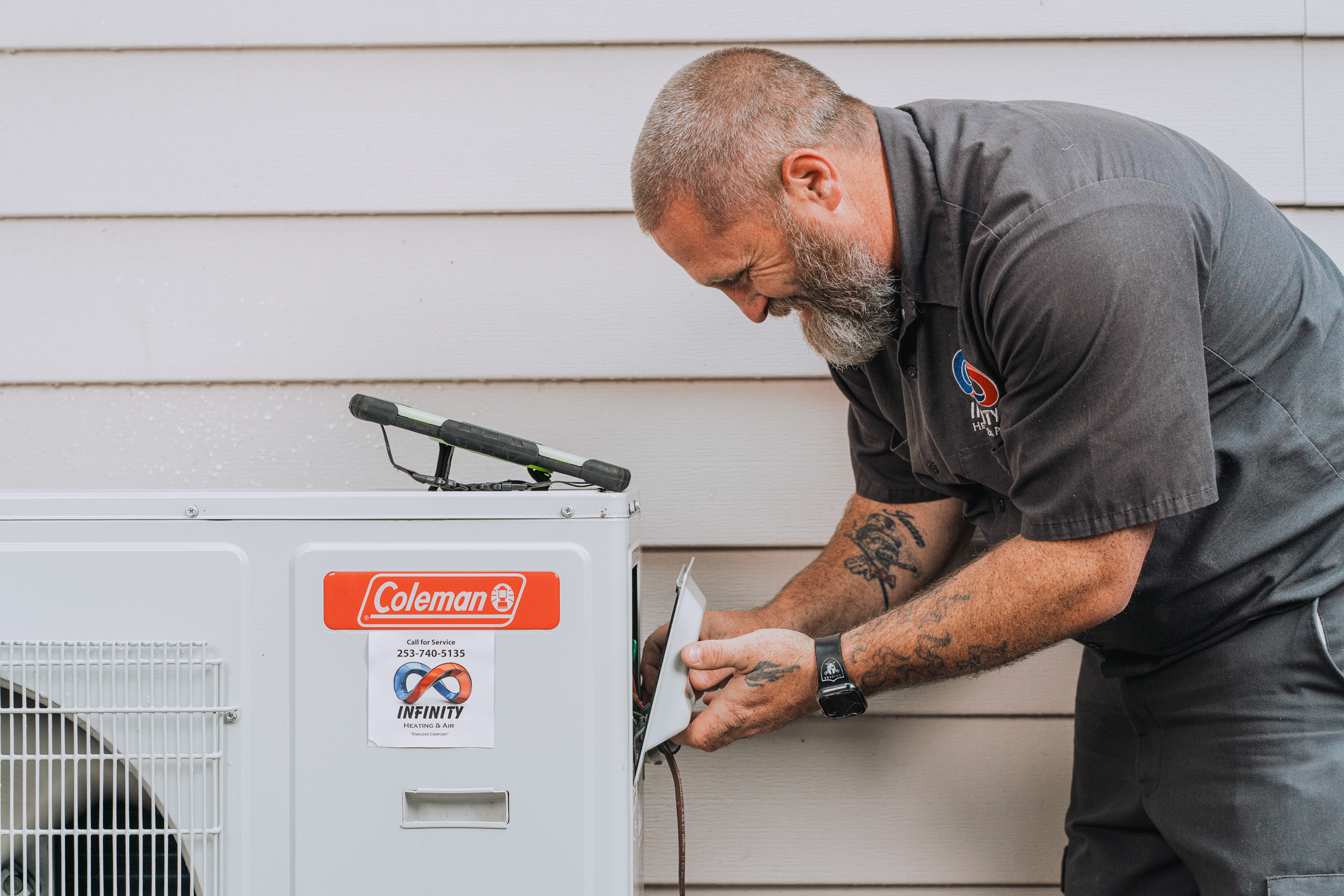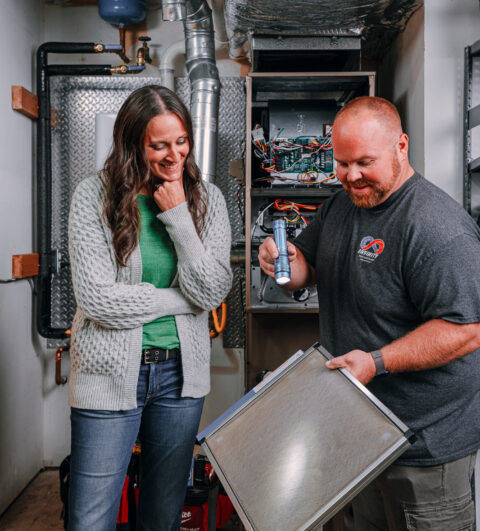As the temperature begins to drop, the health of your furnace becomes all the more crucial to the comfort and health of your home. A malfunctioning furnace isn’t just inconvenient—it can drive up energy bills, impact indoor air quality, and even pose safety hazards like carbon monoxide leaks. In this guide, we’ll walk you through the key warning signs that your furnace may need replacing, practical maintenance tips, and how Infinity Heating and Air can help you stay warm all winter long.
What Makes Examining Your Furnace Before Winter Important?
The Risks of Ignoring a Failing Furnace
- Higher heating bills due to inefficiency.
- Unexpected breakdowns during freezing temperatures.
- Safety risks such as electrical malfunctions or harmful gas leaks.
How Cold Weather Impacts Furnace Performance
Colder temperatures place greater stress on an aging heating system, often exacerbating existing furnace problems. Overworked systems may consume more energy, break down faster, and leave you unprepared for prolonged cold spells.
Top Signs Your Furnace Needs Repair
Unusual Noises or Odors
Your furnace should operate quietly. If you notice strange noises like banging, squealing, or rattling, it could indicate a serious problem with internal components such as the blower motor or ignition system.
Unusual odors—such as a burning smell or the scent of gas—are also red flags. While dust burning off at the start of the season is normal, persistent smells should be inspected by a professional.
Rising Energy Bills Without Increased Usage
A sudden spike in your heating bills without a change in thermostat settings or usage is a common sign of a furnace problem. Poor efficiency caused by worn-out parts, dirty air filters, or duct leaks can make your furnace work harder to heat your home.
Uneven Heating Throughout Your Home
If certain rooms in your house feel colder than others, it might indicate problems with airflow, ductwork, or the furnace’s capacity to distribute heat evenly. This imbalance can strain your HVAC system and decrease comfort.
Difficulty Starting or Staying On
A furnace that struggles to turn on or frequently shuts off may have ignition problems, a faulty thermostat, or wiring issues. This is especially common in older gas furnaces nearing the end of their lifespan.
Short Cycling (Turning On and Off Frequently)
Short cycling happens when the furnace turns on, heats briefly, and shuts off before reaching the desired temperature. This can result from clogged furnace filters, overheating, or a malfunctioning thermostat.
Yellow or Flickering Pilot Light
A steady blue pilot light indicates proper combustion. If the flame is yellow or flickering, it could signal improper ventilation or the presence of carbon monoxide, a hazardous gas that requires immediate attention.
How to Check Your Furnace Before Winter
Perform a Visual Inspection
A visual inspection can reveal a lot about your furnace’s condition. Start by examining the unit for visible wear and tear, such as rust, cracks, or damage to the heat exchanger. Make sure to check the flame in your gas furnace—it should burn bright blue. A yellow or flickering flame may point to improper combustion or even a carbon monoxide leak, which requires immediate attention. Taking a few minutes to carefully inspect your furnace can help you catch problems early and avoid costly repairs or replacements during the peak winter season.
Test the Thermostat and Airflow
Ensure the thermostat setting matches your desired temperature. If you notice weak or inconsistent airflow, it might be time to replace your system or inspect the ductwork.
Regular Maintenance Tasks
- Replace the furnace filter every 1–3 months to ensure optimal airflow.
- Clean and vacuum around vents and the furnace unit to remove dust buildup.
- Schedule annual furnace maintenance with a professional technician.
When to Replace Versus Repair Your Furnace
The 50/50 Rule
If the cost of repairing your furnace is more than 50% of the cost of a new system—and your unit is over 10 years old—it’s time to consider replacement.
Long-Term Benefits of a New Furnace
Upgrading to a new furnace can offer numerous long-term advantages for your home. Modern systems are designed to be more energy-efficient, which translates to significantly lower heating bills over time. Beyond cost savings, a new furnace can improve your indoor air quality by incorporating advanced filtration systems that reduce allergens and dust. Plus, a reliable, energy-efficient furnace provides consistent heat throughout your home, which just generally improves the comfort of your space.
Final Thoughts
As winter approaches, don’t wait until your furnace fails to take action. By recognizing the signs that your furnace needs replacing, you can avoid costly repairs, improve your home’s comfort, and enjoy lower energy costs all winter long.
How Infinity Heating and Air Can Help
Here at Infinity Heating and Air, we pride ourselves on providing reliable, professional heating and cooling solutions in Western Washington. Whether you need furnace repairs, maintenance, or a full replacement, our experienced team is dedicated to ensuring your home stays comfortable and safe all winter long. With a focus on energy-efficient systems and whole-home air quality solutions, we’ll tailor our services to meet your unique needs. Contact us today for a consultation and let us help you enjoy endless comfort in every season!





